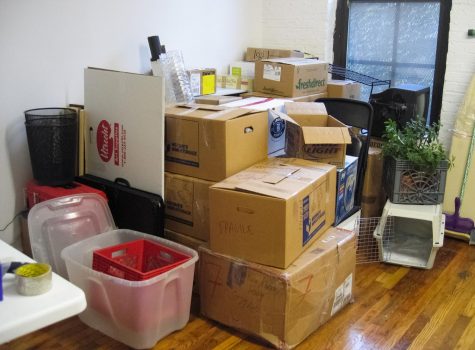Beware of the mold
September 26, 2013
Something is lurking in your kitchen: a horror with hundreds of pale hairs, a monster with a million children. It was thriving long before humans were a glint in the world’s eye, and it will probably still be here when humans have kicked the bucket. Hell, it might even kick our bucket for us.
“Long term exposure to high concentrations of the toxins produced by molds can be fatal for humans,” said Dojin Ryu, an associate professor with the WSU and UI joint School of Food Science.
Ryu has a doctorate in food science from the University of Nebraska, Lincoln and has studied mycotoxins, the bothersome byproducts of mold.
The toxins left in food by mold are what makes molded food so unappetizing and dangerous, said Ryu. Eating these poisons can reduce the ability of the immune system to keep the body healthy, and can make you feel feverish, exhausted and depressed, and cause stomach aches or diarrhea.
You could even be accused of witchcraft. The famous witch trials in Salem, Mass. might have been caused by people eating moldy rye grains, according to an article by Linnda R. Caporael in the scientific journal Science. Extended exposure to the toxins in molded rye resulted in ergot poisoning, which caused convulsions, hallucinations and delirium known as St. Anthony’s Fire.
Part of the fungus family, mold thrives almost everywhere since moisture and organic matter are its only requirements. Right now, while you read this, there is some mold very close to you.
Don’t be alarmed. Don’t make any sudden movements. Just keep reading, and you might live another day.
Ryu said there are many types of mold, and each mold can produce several different mycotoxins, making it difficult to determine the exact effects of molds. He said different people are affected in different ways.
Some of the most common mold types students find on their food are penicillum (the green and blue “fuzzies” found on breads) and rhizopus (the “white clouds” found on rice), Ryu said. Be wary of food-saving strategies like removing the infected parts. Molds can quickly spread in the interior of foods without being detected by sight, so even if it looks okay, you are chancing a very weird and uncomfortable experience.
I personally have eaten slightly moldy foods, either by ignorance, stubbornness or extreme hunger. When the only thing in your pantry is a slightly spotty bread roll, it can be very easy to accept the symptoms and dig in. However, the resulting mental conditions were not helpful for studying.
An hour or so afterward I felt dizzy, had trouble sleeping, could barely focus in class and probably drooled more than usual. Please do not make the same mistake.
Several foods I’ve noticed to be susceptible to mold growth are bread, fruit, broccoli, mushrooms, beans and peppers. When buying produce, always double-check for mold and report any you find to the produce department.
To prevent your precious grub from going bad, Ryu recommended checking the expiration dates on processed foods, storing foods in airtight containers and refrigerating.
“The two most important factors affecting mold growth are temperature and moisture,” Ryu said.
Another resource I have found useful is the website eatbydate.com, where you can look up how long foods last and the best way to store them. It also provides ways to use up ingredients that are getting close to molding.
Mold is the bane of all who wield a spoon. It corrupts ingredients that could have been delicious foods, stealthily eats our food before our very eyes and can never be entirely eliminated. But with knowledge and careful planning, it can be kept at bay.
Tips:
Never eat moldy foods. It’s no fun.
Prepare food in batches that can be eaten in less than a week.
Freeze extra pancakes, bread and tortillas to make them last longer.




















